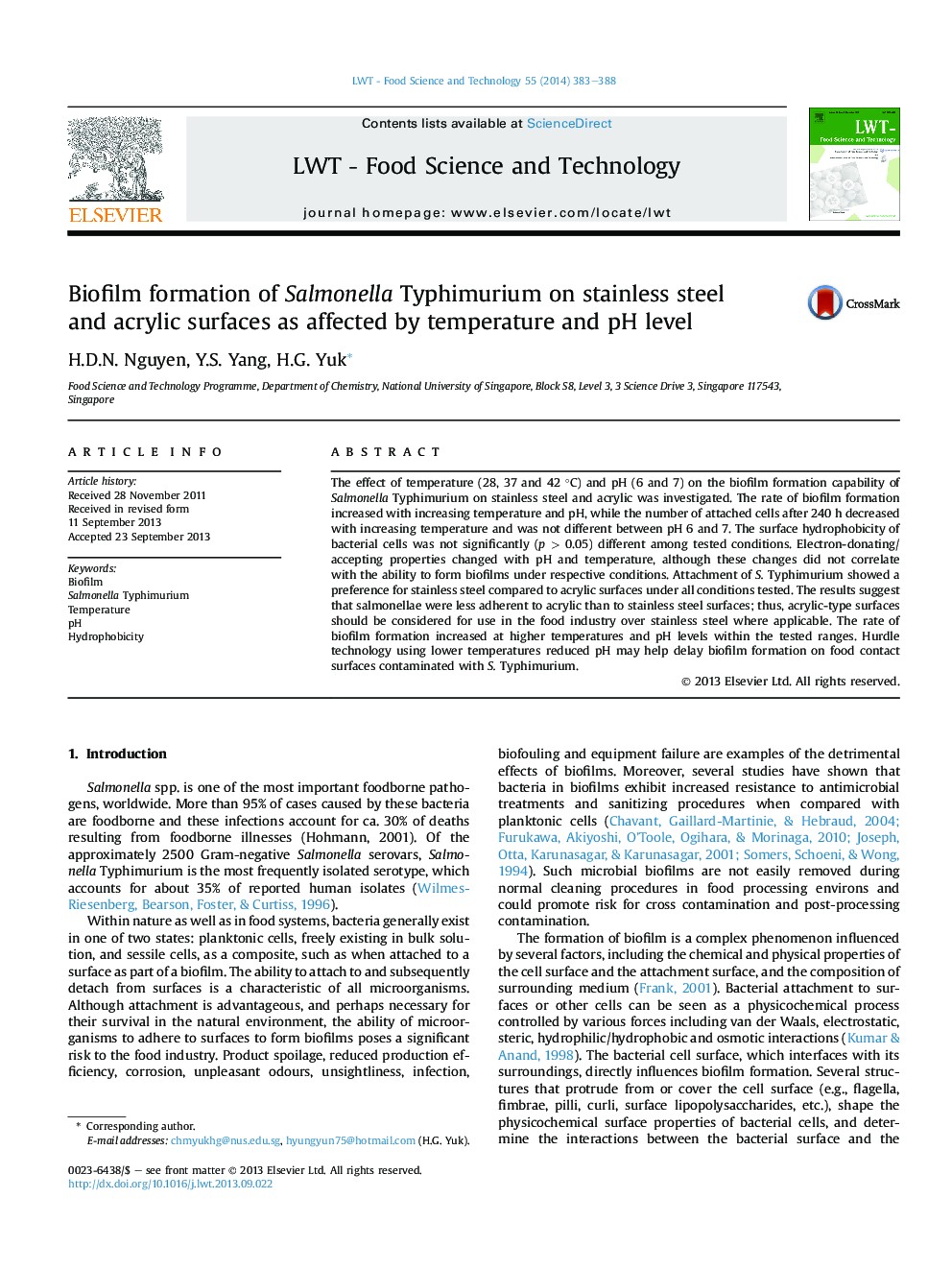| Article ID | Journal | Published Year | Pages | File Type |
|---|---|---|---|---|
| 6403992 | LWT - Food Science and Technology | 2014 | 6 Pages |
â¢Biofilm formation of Salmonella Typhimurium was investigated under different conditions.â¢The rate of biofilm formation increased at higher temperatures and pHs.â¢The hydrophobicity of cells was not significantly different among tested conditions.â¢Lower temperatures and pHs would help to delay biofilm formation.
The effect of temperature (28, 37 and 42 °C) and pH (6 and 7) on the biofilm formation capability of Salmonella Typhimurium on stainless steel and acrylic was investigated. The rate of biofilm formation increased with increasing temperature and pH, while the number of attached cells after 240 h decreased with increasing temperature and was not different between pH 6 and 7. The surface hydrophobicity of bacterial cells was not significantly (p > 0.05) different among tested conditions. Electron-donating/accepting properties changed with pH and temperature, although these changes did not correlate with the ability to form biofilms under respective conditions. Attachment of S. Typhimurium showed a preference for stainless steel compared to acrylic surfaces under all conditions tested. The results suggest that salmonellae were less adherent to acrylic than to stainless steel surfaces; thus, acrylic-type surfaces should be considered for use in the food industry over stainless steel where applicable. The rate of biofilm formation increased at higher temperatures and pH levels within the tested ranges. Hurdle technology using lower temperatures reduced pH may help delay biofilm formation on food contact surfaces contaminated with S. Typhimurium.
